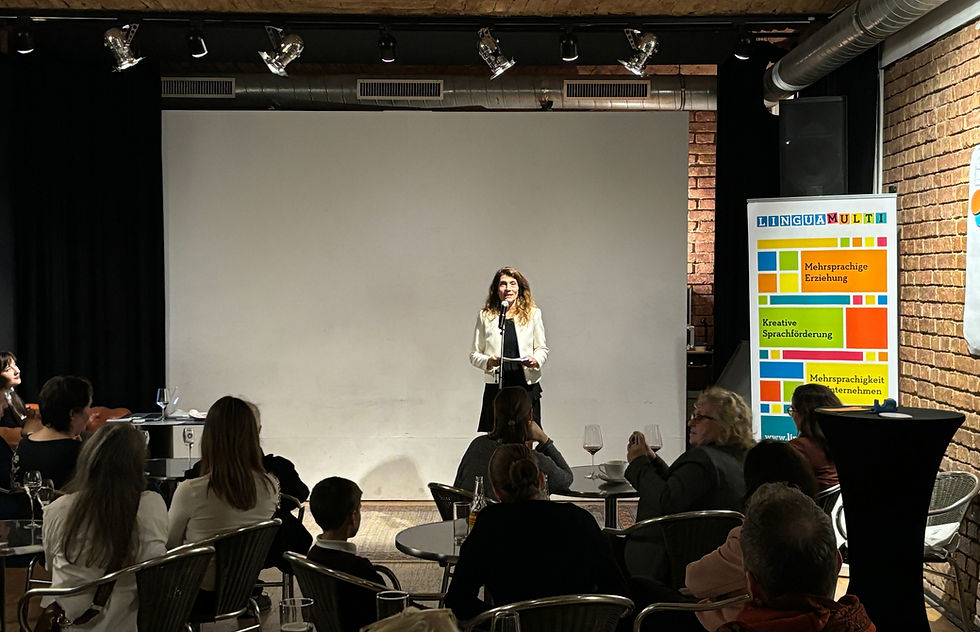Going on a German walk
- LIMUacademy

- Dec 4, 2022
- 2 min read
Even when it's cold outside, it's important to go out for a walk and catch some fresh air. The movement outside is good for the health and helps to relax the mind. But the walk can be used for something else as well: to practise German with children!

We will show you three ideas for practising German with children during your daily walks:
Idea 1 (material: paper, pens)
During the walk the child should pay close attention to the surroundings. Where does the walk start? What places do you pass? What kind of animals or which neighbours do you encounter?
Afterwards the child should write a short story about the walk in a chronological way. Through this the child practises their writing competence as well as the "Präteritum" in German.
For example: "Zuerst gingen wir aus dem Haus hinaus. Danach spazierten wir durch die Straße an der Bäckerei vorbei. Dann kamen wir zum Park. Im Park gab es viele Raben..."
Younger children, who cannot write yet, can draw a picture of the walk and speak about it.

Idea 2 (material: weather forecast, paper, pens)
Every morning the parents could follow the weather forecast with the child on tv, the radio or the internet. After that the child should look out of the window and check if the forecast was correct. Later during an afternoon walk the child can observe the weather again. The observations can be collected in a weather diary: throughout one week the child should draw and write about the weather in the morning and in the afternoon. This way the child practises words and phrases connected to the semantic field of "weather". The child also learns to pay attention to the environment and surroundings.
Younger children can do a weather diary as well by drawing the weather and explaining it orally.

Idea 3 (for families with a dog)
This idea is suitable for families with a dog. While taking the dog for a walk the child can immagine that the dog is a tourist guide and talks about the surroundings in German. The parents can play along and ask questions, even in their mother tongue. The child (in the role of the tourist guide dog) should answer only in German! This way the child practises free speaking and creative thinking. Also, the child learns how to take on another perspective (the one of the dog) and might even feel more comfortable speaking German.





Comments